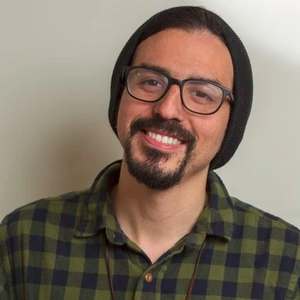
Who are we?
We are a Spanish language school that offers traditional, grammar-intensive live Spanish classes.
Learn moreLearning a language is an endless process. We never stop learning even in our native language. Your progress can only be proportional to the time spent, your drive, your need for it, the use of it and even just your curiosity and desire to understand every aspect of it. To keep your interest alive, it is important to study different aspects of it and make it a habit to switch up the study focus often; rotate between grammar, speaking (and pronunciation), reading, writing and listening. This will stop you from falling in a routine and getting bored because you stop seeing it as fun, which is how it should feel.
Fortunately, research shows that listening sessions, or language input (more on that below), is one of the most important and crucial aspects of learning a language, one that is often overlooked for more emphasis on talking and drilling grammar. Luckily for you, it’s also the one that takes the least effort to do and can be done just about anywhere.
Babies learn just by listening to sounds and babbling them, similar to adults who move to a new place and after a couple of years can speak the local language. We don't have the same capacity we had when we were babies, but it can still be done.
In order to understand and speak a new language, our brains have to get used to its sounds and decode them in ways we are not used to, and our vocal organs have to try and detach themselves from the muscle memory created by the sound system (phonology) of our own native language and move in different ways and shapes to produce new sounds and make them habitual. All this is hard but not impossible. It also depends on how far you wanna take your pronunciation ;)
There’s also evidence that in listening and watching what’s going on (during a real life situation among native speakers, in a foreign country or even watching a show/movie) your brain is picking up on comprehensible input: sound input that you can understand (without knowing the words per se) just because of the visual and contextual cues.
Now, how exactly can you use listening to your advantage? It sounds simple, right? Just sit back and listen to your target language. Well, yes, in a way you will get more benefits from that than you think, but assuming you’ve done that and that doesn't really sound all that new, don't worry; here’s a specific method, based on linguistic research in the field of Language Acquisition, that will help you accelerate your language learning, even if you don’t feel like you’re doing much. Really.
Shadowing is a not-so-known method that can help you train the physical aspect of speaking a new language: pronunciation, rhythm, melody, intonation, pauses, breathing, etc. It’s a way to basically “fast-track” the physical articulation aspect of Spanish (or any language); a way to “download” or “plant” the feel and the “living” side of the language into the parts of your brain that send motor signals to your speech organs and muscles.
If you’re creating a solid motor base for the language you’re learning, then the things related to word order and rules (i.e. grammar and syntax), vocabulary (i.e. semantics), and pronunciation (i.e. phonology) will have a sort of physical frame to fall on top of and start filling it in. In other words, the physical phase of speaking/living a language, does NOT have to come last after months or years of just studying grammar, reading and writing; it can be simultaneous and, in many ways, it can even come first or very early on in the process.
You can try shadowing by choosing any audio clip in Spanish from 2 to 5 minutes long or so: news, shows, movies, clips, interviews, monologues, dialogues or anything else as long as it features fluid, natural and uninterrupted native speech, with subtitles or transcripts, preferably. You can choose any country’s variety of Spanish or focus on the one you prefer or the one you think you’ll be more exposed to.
It would be a good idea to start with audio that is at your relative level in terms of speed and content, or slightly more advanced. The idea would be to spend a week or so with the same clip.
First listen to the clip a couple of times just taking in the sound with all its details (this includes pauses, pitch, intonation, rhythm, stress) but not necessarily meaning or vocabulary, so try not to look at transcripts or subtitles yet. If you understand some words or sentences, that’s great! That means you’ve had some exposure to the spoken language, but remember the goal isn’t to figure out the meaning, so don’t focus on what it’s about. Instead, focus on the sound and how it flows, paying attention to the elements underlined above.
After a few times of just listening (2 or 3 times or until you feel like you’ve taken in the sound enough and are fatigued), you can try to start mimicking everything you can, right as soon as you hear it, so as to “shadow” the original audio clip. Again, don’t look at the transcripts or subtitles yet. It’ll be hard at first, but don’t worry about accidentally skipping what you can’t keep up with since you are listening to continuous, real-time audio and pronouncing almost simultaneously. Just don’t pause the audio.
Try to take in the flow, even if all you can do is mumble sounds. After you’ve done this a few times, the next step would be to finally start following the transcript/subtitles with your eyes as you listen. Do it as simultaneously as possible.
It’s important that you don’t see it as a reading exercise. The text should only guide you a bit better in what you have otherwise already been listening to for a while. It will help you aim better at the pronunciation, but the weight of the attention should always be on the sound. So if a sound didn’t seem to match a word spelling you’re seeing, choose the sound as the real reference.
Don’t look up words or meanings. It’s ok to not understand things at this point. Repeat this every night for a few days until you can start predicting what comes next because you have heard the clip enough, and at this point you might be able to start pronouncing it truly at the same time as the speaker. Even if there’s still a little delay, that’s ok; it’s meant to be challenging, but the idea is to not have time to correct or perfect pronunciation but just flow with the physical feel of the language in your body and keep pushing through.
By doing this, you’re exercising active listening and active imitating/mimicking, which is very different from repetition (playing a clip then repeating after a pause). When shadowing, pausing and repeating would take away the natural flow of how a language lives and forms in the mouth of a speaker. Repetition is good for correcting pronunciation of specific words or sounds you are perfecting; shadowing, on the other hand, is for training the overall physical aspects of speaking in a particular language and improving the recognition of phonemes (sound units of a language), for which even pitch, rhythm and breathing are important.
The very last step, which could be done at the end of a week or two (however long you’ve felt like you’ve “squeezed” the sounds of the audio clip with noticeable benefits), would be to sit down and finally break down the actual content; look for words you don’t know, examine sentence structure and grammar, and try to understand what was being said the whole time. You might notice that before you do this last step you had already started understanding the content by just listening and shadowing.
As a bonus, you could add some additional steps, like recording yourself and even rewriting the whole audio in the target language.
Clips from shows or movies are great. If you want to go with audiobooks, Assimil is a great option. Also Yabla, which is both a website and an app, provides videos of varying difficulty and topics with subtitles in Spanish (and English) that you can click to see a word’s definition; you can also slow down and even loop the video. Pretty ideal for shadowing.
On YouTube you can look for any Spanish dialogue video that has subtitles/transcripts; for example there’s a channel called Easy Languages where they speak to pedestrians in many cities.
Happy shadowing!

Edgardo Salgado is a Spanish language instructor at Berges Institute.
Who are we?
We are a Spanish language school that offers traditional, grammar-intensive live Spanish classes.
Learn more